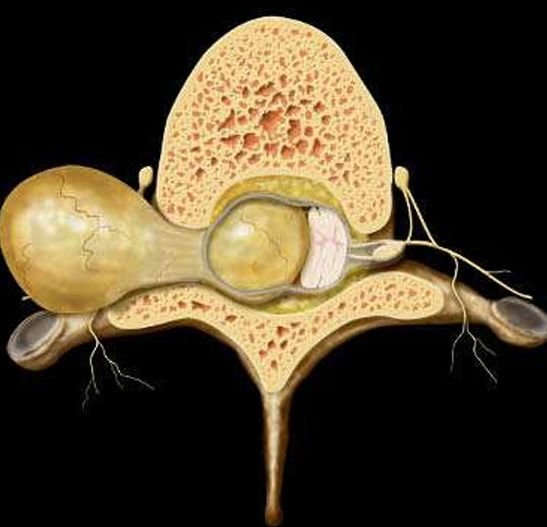Osteoma
Osteoma
Pediatric spinal osteoma is an extremely rare, slow-growing benign bone tumor that arises from the bony structures of the vertebral column. Although osteomas are more commonly seen in the skull and facial bones, when they appear in the spine of children, they can cause localized pain, nerve root compression, or spinal deformity depending on their size and location. In Bangladesh, these rare tumors are often misdiagnosed as musculoskeletal issues or infections due to the limited awareness and accessibility of pediatric spine specialists. However, with the expertise of Dr. Md. Nafaur Rahman, Bangladesh now offers advanced diagnostic imaging and microsurgical treatment of pediatric spinal osteomas for families seeking specialized care. What is a Spinal Osteoma? A spinal osteoma is a benign, bony tumor that originates from mature bone tissue. It usually arises from: The posterior elements of the spine such as lamina or spinous process Occasionally from the vertebral body It is composed of compact or cancellous bone and may be asymptomatic or symptomatic Although considered benign, a spinal osteoma can grow large enough to cause: Compression of nearby nerves Spinal canal narrowing (stenosis) Spinal instability or deformity Causes and Risk Factors Sporadic cases – most pediatric spinal osteomas have no identifiable cause May be associated with genetic conditions like Gardner’s syndrome Prior trauma or chronic irritation may rarely play a role More common in males and typically diagnosed in older children or adolescents Symptoms in Pediatric Patients The clinical presentation depends on the size and location of the tumor. Common signs and symptoms include: Persistent back or neck pain not responding to medication Localized tenderness or swelling over the spine Radicular pain – radiating pain in arms or legs due to nerve root compression Muscle weakness or numbness Changes in posture or gait Scoliosis or kyphosis in larger tumors Rarely, bladder or bowel disturbances if the tumor compresses the spinal cord In Bangladesh, such symptoms are often initially misattributed to nutritional deficiencies, infections, or trauma, delaying proper diagnosis. Diagnosis: How It's Done in Bangladesh A high index of suspicion and detailed imaging are essential for early and accurate diagnosis. Clinical Examination Neurological assessment Spinal alignment and gait evaluation History of trauma, infection, or genetic conditions Imaging Studies X-ray of the spine – may show dense, radiopaque bony mass CT scan – most accurate in identifying the exact size and bony origin MRI of the spine – evaluates spinal cord compression and soft tissue involvement Bone scan – to rule out multifocal lesions Genetic testing – if syndromic association like Gardner’s syndrome is suspected Treatment Approach While small, asymptomatic osteomas may be observed, surgical removal is required if the tumor is causing symptoms or spinal cord compression. Surgical Goals: Complete tumor excision Spinal cord and nerve root decompression Preservation of spinal stability Correction of any spinal deformity Dr. Nafaur Rahman’s Surgical Expertise Includes: Microsurgical resection using high magnification Intraoperative spinal navigation for precise tumor removal Minimally invasive spine surgery (MISS) in selected cases Spinal fusion or instrumentation if structural integrity is compromised Postoperative rehabilitation for mobility recovery and long-term function Prognosis and Recovery Excellent long-term outcomes after complete surgical removal Recurrence is rare, especially in solitary osteomas Physiotherapy and neuro-rehabilitation are crucial to restore strength and flexibility Regular follow-up MRIs ensure no tumor regrowth Children can return to normal academic and physical activities Challenges in Bangladesh Delayed diagnosis due to rarity of the condition Lack of pediatric spinal imaging in many districts Insufficient awareness among primary care and orthopedic providers Financial burden and travel costs for rural families Cultural stigma around pediatric tumors and surgeries Why Trust Dr. Md. Nafaur Rahman? One of the most experienced pediatric neurosurgeons in Bangladesh Specializes in rare spinal tumors and advanced microsurgical techniques Serves both government and private sectors (NINS & BPNC) Leads a multidisciplinary team for diagnosis, surgery, and recovery Offers affordable, compassionate, and ethical care Passionate about educating the public and improving early intervention Appointment and Contact Dr. Md. Nafaur Rahman Assistant Professor, Pediatric Neurosurgery National Institute of Neurosciences & Hospital (NINS) Chief Consultant, Bangladesh Paediatric Neurocare Centre 📞 For Appointment/Serial: 📱 01912988182 | 01607033535 🌐 Website: www.neurosurgeonnafaur.com










